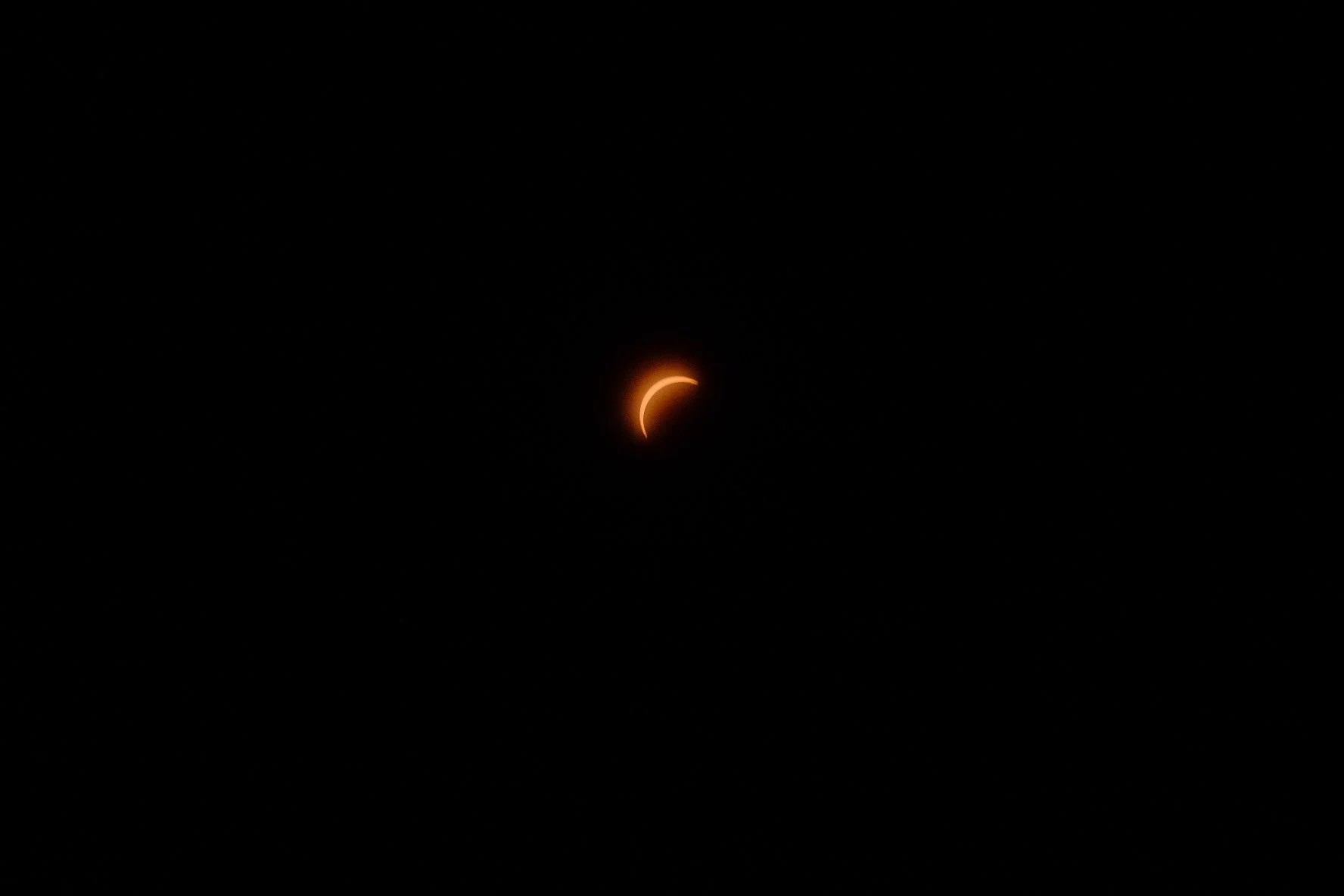In Saratoga Springs, residents can expect the sun to rise and set each morning and evening without fail. A recent celestial event, however, interrupted this normal routine, capturing the attention and excitement of the town and its college students alike.
On Monday, April 8, hundreds of students and faculty flooded Case Green to witness a total solar eclipse. Many brought colorful picnic blankets and tasty treats along, turning the afternoon into one of fun and relaxation.
This eclipse was the first total eclipse in the United States since 2017, visible from as far as Russia. The path of totality stretched from Mexico to Canada, covering approximately 3,300 miles over the course of 5 hours.
In the weeks leading up to the event, the College and student clubs took precautions to promote student safety by stocking up on viewing glasses. These special glasses, made for watching the eclipse with the naked eye, were distributed by the Office of Communications and Marketing and by the Skidmore Physics Club ahead of time.
Spectators began to gather early in the afternoon, staking out space on the grass and eagerly awaiting the solar phenomenon. The sounds of excited student chatter and music from portable speakers melded together into a muffled hum across the lawn. With every passing minute, students noticed that the air grew colder and pulled out winter coats and sweaters. As the eclipse reached its peak in Saratoga at 3:27pm, curious students donned their eclipse glasses and looked to the sky, hoping to catch a glimpse of the sun nearly completely covered by the moon. Many got creative, placing the glasses’ lens against their phone cameras to take pictures.
“It’s supposed to be a once in a lifetime event,” a first-year student commented when asked for their opinion on the eclipse. “I’m glad my professor canceled class — I might have skipped if he didn’t.”
Indeed, many teachers either canceled or ended class early, allowing their students to bask in the early spring warmth. Some students took advantage of this opportunity, using their free day to drive up to nearby cities directly in the path of totality, like Syracuse, NY and Burlington, VT, and watch the eclipse there.
No matter the location Skidmore students watched the eclipse at, there were commonalities they all shared: mutual appreciation for a scientific wonder and a strong sense of community.
Other students echoed this “once-in-a-lifetime” sentiment, impressed by the supposed rare nature of the eclipse. “This feels like a reset,” one junior stated as she lay on her blanket, sipping on a coffee. “Feeling the sun [on my skin] and seeing this happen makes me realize how big the universe is. It kind of grounds me, you know?”
Eclipses are more common than students may realize, however. Partial eclipses occur every few years, but often the path of totality crosses over other countries or oceans. Luckily for Skidmore students, this particular eclipse was not only total but also passed over the Northern United States; it will be a while until this coincidence happens again. The next total eclipse in the United States will be visible in Alaska in 2033, for example, but will only last for 2.5 minutes. Traveling to Alaska would be taxing for most students, to say the least.
After that, another total eclipse will occur in 2044, albeit over Montana. The best time and place for students to see an accessible total eclipse, however, will be in 2045. This event has already been dubbed the “Great American Solar Eclipse,” stretching from California to Florida.
“You might just catch me in Montana for the next one,” an English professor joked after the eclipse. “And you can bet I’m sticking around for the big one in twenty-two years.”
